“I am Lord of all I survey” might have been apt for Cortez when he stood upon a peak in Darien and gazed upon the Pacific for the first time, but it was also appropriate for 22 members of Marple LHS starting out on the summer stroll on a beautiful June evening. The theme of Neil’s walk around the Church Lane Conservation area was to demonstrate just why it has been designated as a Conservation Area by Stockport. Yes, there is plenty of history to be seen. Yes, some of the architecture is memorable. Yes, there is plenty of Samuel Oldknow’s legacy to be noticed. But the point of a Conservation Area is that it takes all these elements, and more, and blends them into a pleasing whole.

An important element in any conservation area is the availability of views, both long distance and those which are rather more intimate so Neil started off by showing the view from the church car park. A superb panorama to the East taking in the three ridges sweeping down from the High Peak to the Goyt — Ludworth Moor, Church Ridge and Mellor Moor. The weather helped, of course, with crystal clear visibility and the evening sun illuminating every detail but a magnificent view whatever the weather.
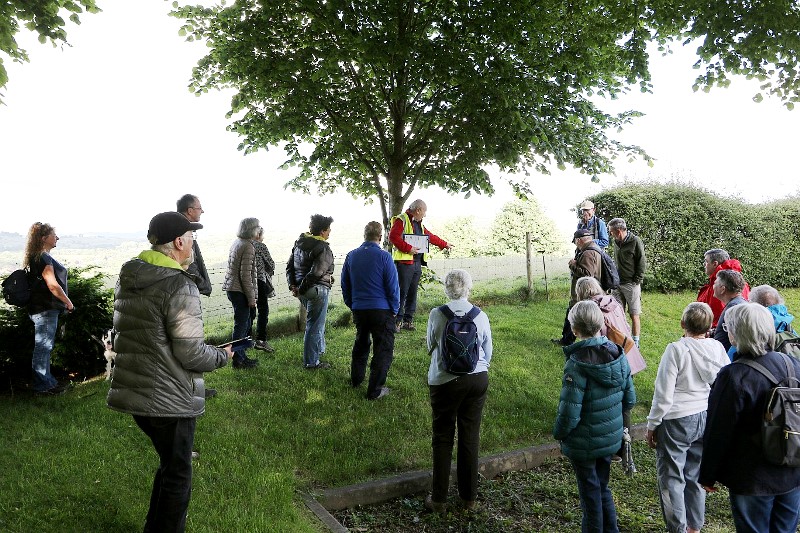
Neil reveals the view, behold all!
At the same time it served to emphasise how this church, like many others, has chosen the high point in its particular parish so that the people can look up to the institution figuratively, as well as metaphorically. Of course the converse of that is that the institution of the church can look down upon its congregation but that aspect is rarely mentioned.
On all these walks we see the familiar in a new way and this happened almost immediately. The view we see of the vicarage is actually the back of the house, not the front. The Victorian church was built on land taken from the vicarage garden and the main entrance to the vicarage was originally through a field gate on the main road. This area has always been associated with the established church - the first church, a simple black and white building of which no trace remains, the Georgian church largely financed by Samuel Oldknow with its tower standing straight and solitary and the Victorian church, still in use today but without a tower. It should have had a tower, and Neil produced an architectural drawing to prove it, but somehow the money ran out and there was no Samuel Oldknow around to make up the shortfall. Throughout this part of the walk we were royally entertained by the bell ringers of All Saints welcoming us but affirming that it is their territory. How were we to know that the third Monday of the month was practice night.
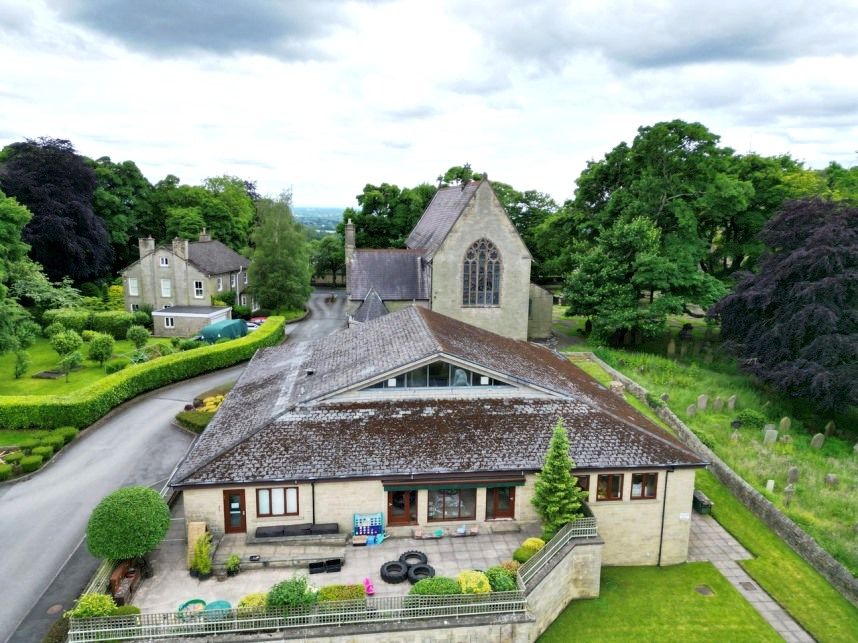
Aerial view of the church hall with the vicarage (left) and the church in background
There were other stories of a bygone age. How the ridge road used to go around the back of the church but Oldknow straightened it, renovated an old well and built a toll house in the hope it might become a turnpike but it was not to be. We have a painting of the prospective toll house - a round building opposite the old church, we even know who lived there, but the only trace now is a modern squarish bungalow called “The Round House.” You may be interested in reading "William Hyde - a man of all trades", in connection with the site of "The Round House."
Other houses too had been and gone. West Towers was a grand house in Victorian times and its coach house is still extant but it became a hotel which was used as a local wedding venue and there were stories on the internet of the owner, Beryl Tweed, having a pink Rolls Royce. It is remarkable what you can find on the internet these days and a simple search enabled us to discover the vehicle in question. It had travelled to America to a private motor museum for several decades but it is now back in England with a private owner. However, the big disappointment is that it is not, and never was, pink. Instead it is a rather sophisticated lilac colour. How memory plays us tricks. Even the hotel is no more as it was demolished in the early 2000s to make way for a select housing estate.
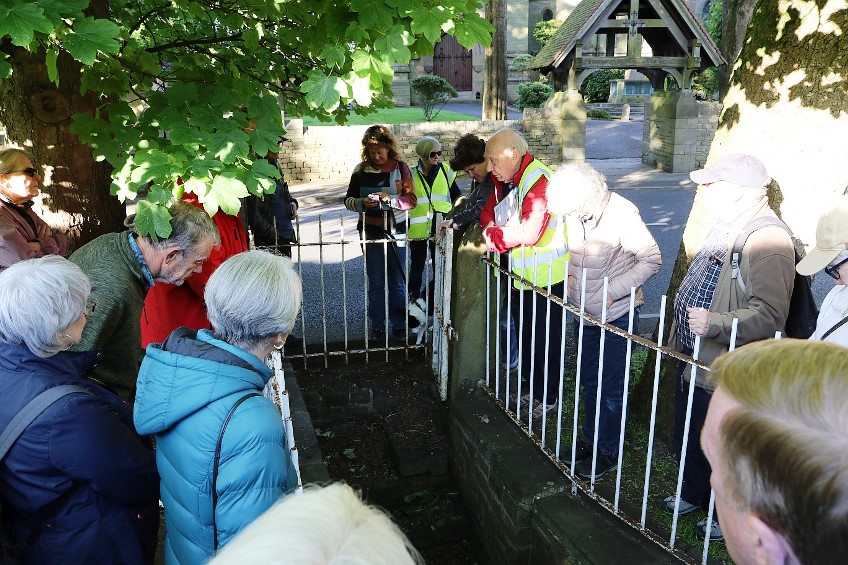
Discussion on the well near both the church and West Towers
A similar fate can be seen with Brentwood; another Victorian mansion that for many decades from the thirties to the seventies under several charities was the home or refuge for many women with children. When this function ended, flats were built in the grounds and a little later the house itself was demolished though the front face of the building was retained as a memory of what it used to be. A talk to the Society expanded on this history.
However, next door was a Grade 2 listed building that is little changed from when it was built in 1895. The Shanty is a distinctive Arts & Crafts domestic design, commissioned by Andrew Macnair, a manufacturer of industrial chemicals, but designed by Barry Parker, a young architect who went on to be known for his development of the Garden City movement. We were grouped on the opposite pavement, discussing the property, when the owners saw our group and invited us in to look in more detail. What a bonus!
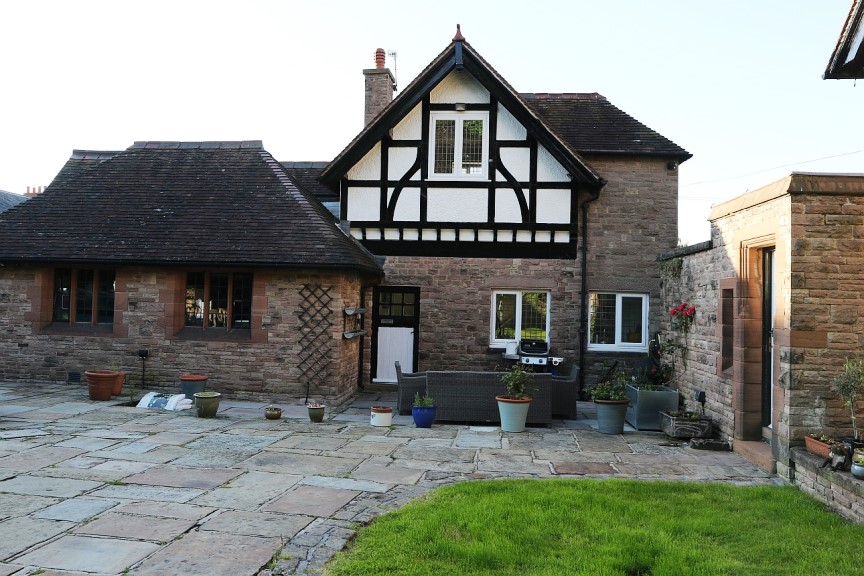
Coach house at The Shanty
Then down Brickbridge Road to the canal. The original plan was to go through the churchyard and follow the Apprentice Walk down to the canal but that was vetoed after we made a Health and Safety assessment. When we saw the stile at Bridge 19 (Brick Bridge). it was obvious why. Covered in ivy, it looked like the entrance to Jurassic Park and the path beyond it was very overgrown. Neil made the bold suggestion that our society could adopt the route and pay for its maintenance and one public-spirited lady suggested a contribution of £200 but no one followed her example so the idea died a death. Instead, we had the site of four of Oldknow’s coal mines pointed out to us, conveniently close to his lime kilns. We could also admire Rose Lea, another of Mr Oldknow’s idiosyncratic designs.
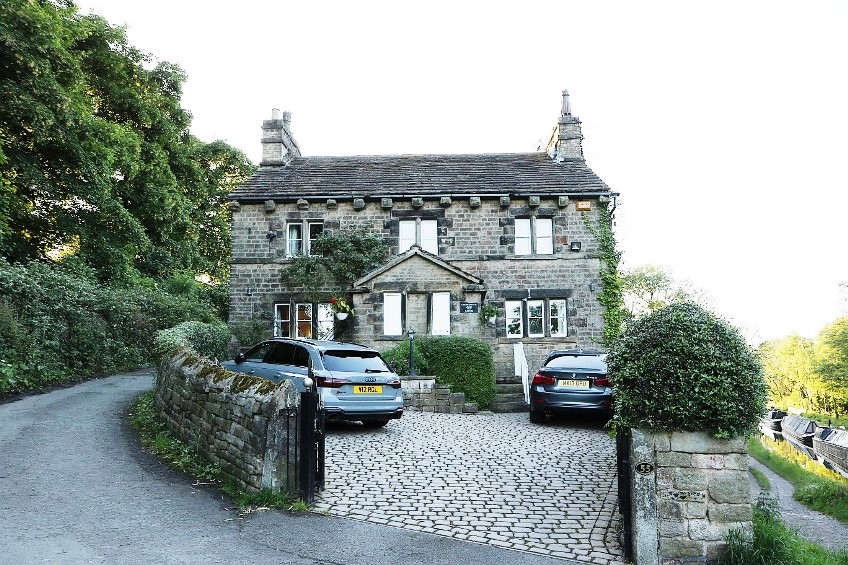
Rose Lea / Churchgate Lodge
Then back up Brickbridge Road to Marple’s ‘Education Quarter.’ Similar in concept to Manchester’s ‘University Quarter,’ though more modest in scale, this area of Marple houses the original school in the barn at Chapel Houses Farm and also the site of the first National School which was in the playground of the present school. Three successive premises of the same school all within fifty metres of each other. And in addition to that, the old grammar school, supported by John Bradshaw, is just down the road where the Conservative Club now stands.
After getting our fill of education we made our way back to the church but looking at some of the Victorian and Edwardian villas on the road with examples of polychromatic brickwork on these solid status symbols. These alone justify the designation of the locality as a Conservation Area but the attractive views both within and away from the area and the various historical buildings and artefacts confirm that status.
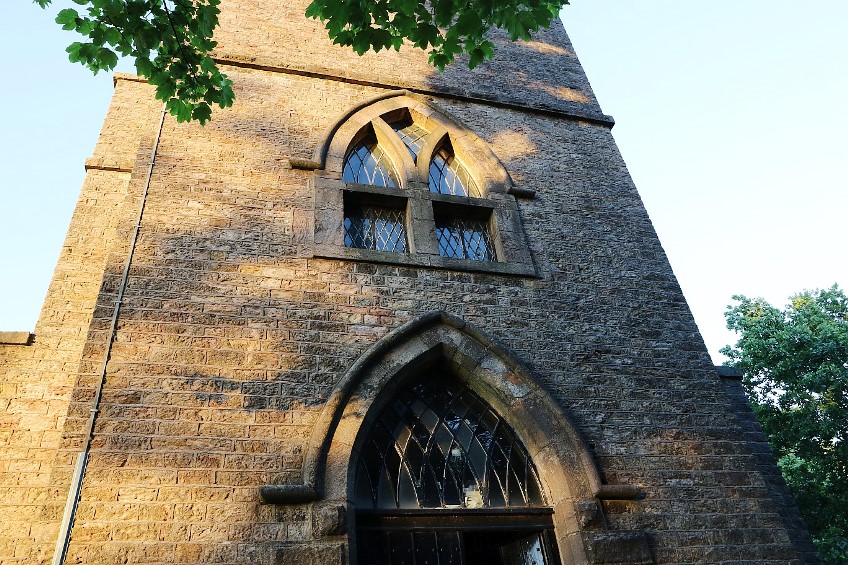
The icing on the cake at the end of the walk was the offer of a visit to the church tower. (above) Fortunately the bell ringers had finished their practice and departed by that time. We anticipated that Christine would produce a magnificent old-fashioned key but she merely picked a Yale key out of her purse. What a let down! However, we were able to see the memorials to significant figures from Marple’s history - Samuel Oldknow, Nathaniel Wright and John Isherwood. What we were not able to do was to pay our respects to some equally significant graves in the churchyard, such as the apprentices gravestone. The obvious one is the tabletop grave of Aaron Eccles, a resting place commensurate with his physique, but other more poignant graves include that of the young apprentices commemorated by Charles Walmsley, the first owner of Hollins Mill and the tragic story of Sarah Foster, lost on the Royal Charter. Perhaps next time.







